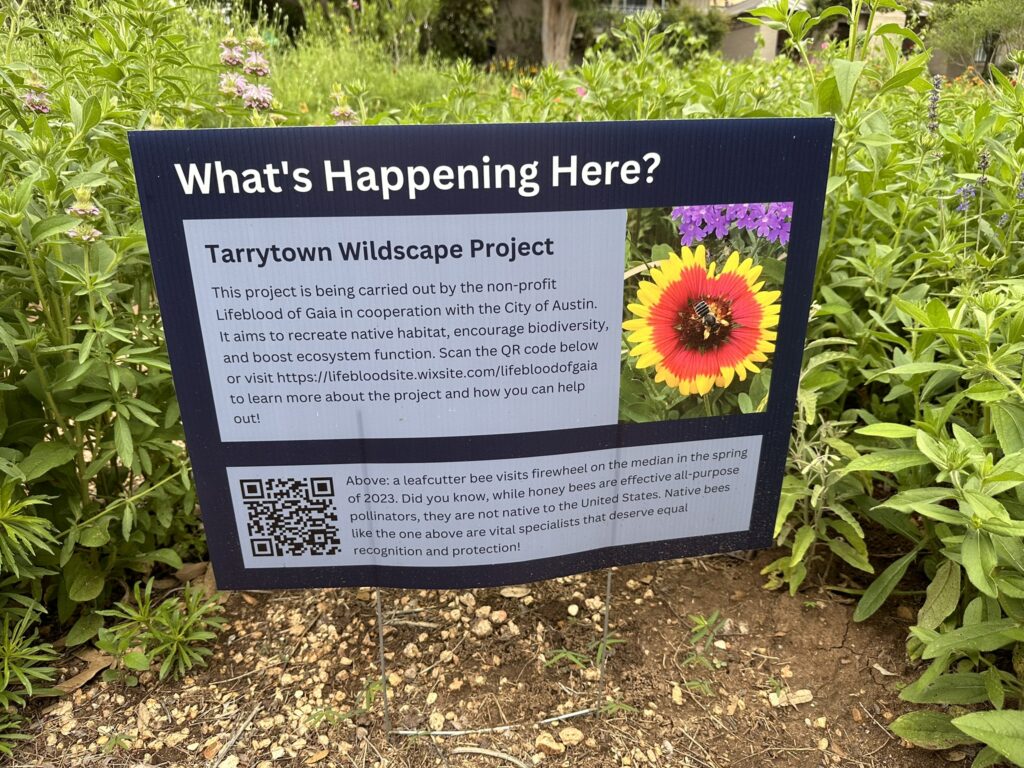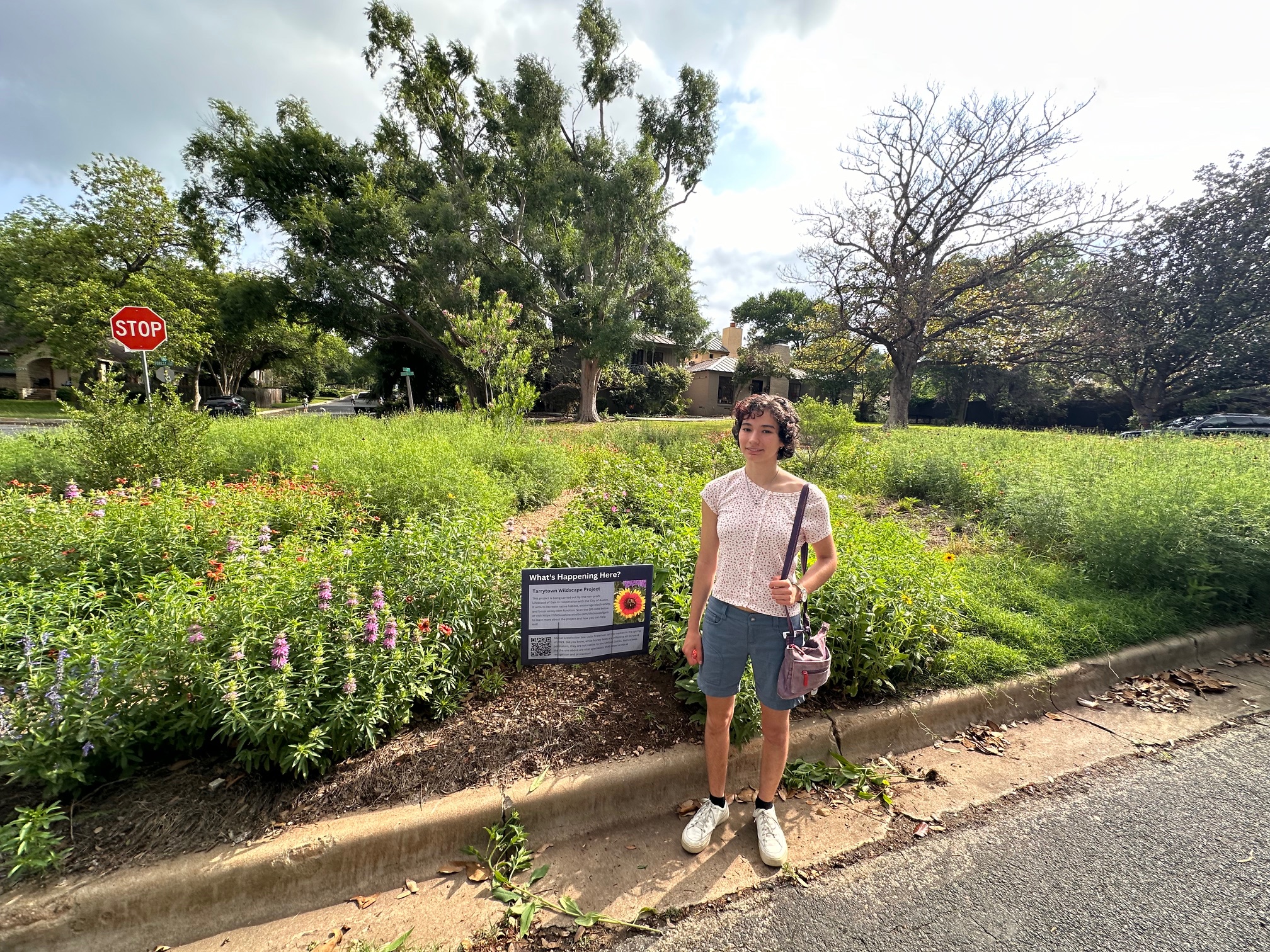By Forrest Preece
A couple of years ago, I wrote a story for West Austin News about Juliette Madere, then an 18-year-old senior at Anderson High, who took it on herself to draw a schematic plan, pick up some tools, and plant a rewilding garden around the corner from her home. Located at the 2000-square-foot triangle formed by Elton Lane, Forest Trail, and Woodmont, these plantings provide a habitat for birds, bees, and other pollinators, and they make a dent in global warming.
On a recent morning, Juliette and I met up at the triangle, and I was blown away to see so many flowers in full bloom and a curving path through the plantings. Thanks to her careful planning and execution (with city approval), these plants provide a vibrant native ecosystem. Minimal watering is needed.
The triangle provides a habitat that supports creatures vital to the ecosystem. With all these native plantings massed in a group, many insects and birds are drawn to the area, sometimes unusual varieties. Recently, she saw a huge banana spider in the garden, a species not usually found outside the Hill Country.
The variety of plantings is remarkable. Some flowers include bee balm, mealy cup sage, black-eyed Susans, Indian blanket, Mexican hat, evening primrose, wine cups, and bluebonnets. She has them carefully arranged to provide a harmonious mix of colors and shapes. A desert willow tree adds a vertical element to the design.
Her interest in the environment goes back to middle school, when she and some friends became aware of issues like habitat loss and the impending extinction of certain species. They decided to form a non-profit group called Lifeblood of Gaia to provide information about these problems and to do what they could to help counteract them.
When she moved on to high school, she started recognizing the scope of the environmental challenges ahead. Looking for a way to get involved, she applied and was accepted into The Youth Forest Council in the city’s Urban Forestry Department, where she worked as an intern for a year. Her tipping point came when she read a book by Doug Tallamy called “Nature’s Best Hope,” which posits that the solution for climate change starts in people’s backyards, one at a time. It didn’t take long for her to act on that idea.
Juliette is majoring in studio art at UT, and she has applied to have a second major in biology. Her goal is to integrate her talents and knowledge in both these fields. She says that right now, the workforce for the triangle’s upkeep is “officially just me.” But she is hoping to organize a Volunteer Workday, and she is eyeing help from a school in the neighborhood.
"It's so rewarding to see the diversity of wildlife the garden has attracted, and the level of interest in native gardening that it’s generated in the community," she says. "The impact this kind of landscaping can have is amazing. With enough people planting native, we can conserve water, combat habitat loss, and even reduce the effects of global warming, one garden at a time."



